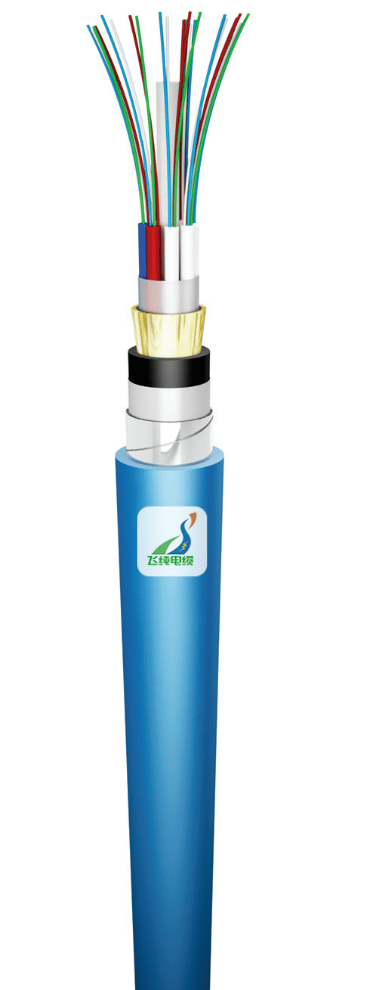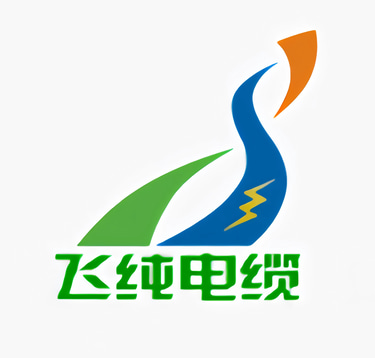Type YOTKGtsDFtlyn 4-72 fibers Mining Cable for long-term laying in outdoor environments such as the field.
It has high corrosion resistance and UV resistance, adding multiple protections to the originally fragile optical fiber to prevent damage. The enhanced type is suitable for open-pit mines and is suitable for long-term use in outdoor open-air environments such as the field.


Type YOTKGtsDFtlyn 4-72 Fibers Mining Cable for Outdoor Long-Term Installations
The Type YOTKGtsDFtlyn cable is an unfilled, armored, and reinforced fiber optic cable specifically designed for mining applications, with a focus on long-term laying in outdoor environments such as open fields or open-pit mines. This robust cable is engineered to withstand harsh environmental conditions, offering excellent resistance to corrosion, UV exposure, and mechanical stresses, thereby protecting the inherently delicate optical fibers.
Construction & Materials
Optical Fibers:
Uses ITU-T G.652D compliant fibers (or fibers as specified in the attached documentation).
Fibers are color-coded according to IEC 60304 (e.g., red, green, blue, white, violet, orange, grey, yellow, brown, pink, black, turquoise) for easy identification and maintenance.
Loose Tube Structure:
The cable features a loose tube made of PBT (polybutylene terephthalate) with an approximate diameter of 2.5 mm.
Each loose tube is filled with a thixotropic gel that stabilizes the fibers and protects them against microbending and mechanical shocks.
Identification of tubes: the first tube is red, the second is blue, and any additional tubes are natural in color. If an insert is used, it is marked in black.
Central Reinforcement:
A central FRP (Fiber Reinforced Polymer) rod with a diameter of 2.5 mm provides additional mechanical strength and helps maintain the cable’s structure over long distances.
Moisture Barrier:
A swelling tape (approximately 0.25 mm thick) is applied as a moisture barrier, ensuring the cable is protected against water penetration—essential for outdoor installations.
Dielectric Reinforcement:
An aramid yarn is incorporated to provide extra dielectric reinforcement, which enhances the cable’s resistance to both longitudinal and transverse stresses.
Jacket Layers:
Inner Jacket: An extruded black PVC jacket with a nominal thickness of 1.0 mm protects the core components.
Armour: The cable is armored with a painted steel tape of 0.3 mm thickness, offering robust protection against mechanical impacts.
Outer Jacket: A self-extinguishing blue PVC outer jacket (nominally 1.5 mm thick) provides further environmental protection and flame retardancy.
Electrical & Optical Performance
Attenuation:
At 1310 nm: ≤ 0.4 dB/km
At 1550 nm: ≤ 0.25 dB/km
These low attenuation levels ensure high-quality, long-distance signal transmission.
Dielectric Core:
The cable’s fully dielectric core design makes it highly resistant to electromagnetic interference (EMI), ensuring clear signal transmission even in electrically noisy environments.
Mechanical and Environmental Specifications
Fiber Count:
Available in configurations ranging from 4 to 72 fibers, accommodating a wide range of network requirements.
Dimensions & Weight:
External diameter of the loose tube: approximately 2.4 mm.
Overall external diameter of the cable: 15.1 ± 0.2 mm.
Cable weight: approximately 310 kg/km.
Tensile Strength:
Maximum tensile force: 4000 N during dynamic installation and 2000 N during static operation, ensuring robust performance under mechanical stress.
Bending Radius:
Minimum dynamic bending radius during installation: 300 mm.
Minimum static bending radius during operation: 225 mm.
Temperature Ranges:
Transport/Storage: -40°C to +70°C
Installation: -15°C to +60°C
Operation: -40°C to +70°C
These ranges ensure the cable remains reliable in the extreme temperature variations common in outdoor mining environments.
Applications
Outdoor Long-Term Installations:
Ideal for laying in open fields, open-pit mines, and other outdoor environments where long-term durability is critical.
Mining Telecommunication Networks:
Provides a robust backbone for high-speed data, video, and signal transmission necessary for intelligent mine automation and monitoring systems.
Harsh Environments:
Designed to withstand exposure to UV light, corrosive elements, and mechanical stress, ensuring reliable performance over time.

Frequently Asked Questions (FAQ)
Q: What is the Type YOTKGtsDFtlyn 4-72 Fibers Mining Cable?
A: It is an unfilled, armored fiber optic cable designed for long-term outdoor use in mining environments, offering reliable high-speed data transmission.
Q: What is the primary application of this cable?
A: It is used for establishing telecommunications networks and monitoring systems in open-pit mines and field installations.
Q: Which optical fiber standard does it utilize?
A: The cable uses ITU-T G.652D compliant single-mode fibers, ensuring high-quality signal transmission.
Q: How are the fibers identified?
A: Fibers are color-coded per IEC 60304 (red, green, blue, white, violet, orange, grey, yellow, brown, pink, black, turquoise) for easy installation and maintenance.
Q: What fiber count configurations are available?
A: The cable is available in configurations ranging from 4 fibers up to 72 fibers, accommodating various network capacity needs.
Q: What type of loose tube structure does the cable have?
A: It features loose tubes made of PBT with a diameter of approximately 2.5 mm, ensuring optimal protection for the fibers.
Q: What is the purpose of the thixotropic gel filler in the loose tube?
A: The gel stabilizes the fibers, minimizes microbending, and protects against mechanical shocks during installation and operation.
Q: How are the loose tubes identified?
A: The first tube is red, the second is blue, and additional tubes are left natural; any inserts are marked in black.
Q: What central reinforcement is used in this cable?
A: A 2.5 mm FRP (Fiber Reinforced Polymer) rod is placed centrally to provide extra mechanical strength.
Q: How does the cable protect against moisture?
A: A swelling (expanding) tape, approximately 0.25 mm thick, acts as a moisture barrier to prevent water ingress.
Q: What additional reinforcement is provided for electrical isolation?
A: The cable includes dielectric reinforcement with aramid yarn, which enhances resistance to longitudinal and transverse stresses.
Q: What material is used for the inner jacket?
A: An extruded black PVC jacket (polwinit) with a nominal thickness of 1.0 mm protects the core components.
Q: What type of armouring does the cable have?
A: It is armored with a painted steel tape (0.3 mm thick), offering robust mechanical protection.
Q: What is the outer jacket made of, and what is its color?
A: The outer jacket is made of self-extinguishing PVC in blue, with a nominal thickness of 1.5 mm, providing environmental resistance.
Q: How does the cable achieve high corrosion resistance?
A: The use of high-quality PVC materials, protective coatings, and steel tape armouring ensures excellent corrosion resistance in outdoor environments.
Q: How is the cable protected against UV exposure?
A: The outer blue PVC jacket is formulated for high UV resistance, making it suitable for prolonged outdoor use.
Q: What are the fiber attenuation specifications?
A: The cable exhibits low attenuation with ≤ 0.4 dB/km at 1310 nm and ≤ 0.25 dB/km at 1550 nm for single-mode fibers.
Q: Why is low attenuation important in mining applications?
A: Low attenuation ensures that high-quality signals are maintained over long distances, critical for real-time monitoring and communication.
Q: What is the overall external diameter of the cable?
A: Depending on the fiber count, the overall diameter is approximately 15.1 mm, ensuring a compact yet robust design.
Q: What is the typical weight of this cable per kilometer?
A: The cable weighs about 310 kg/km, balancing durability with ease of installation.
Q: How much tensile force can the cable withstand?
A: It is engineered to handle maximum tensile forces of around 4000 N during dynamic installation and 2000 N during static operation.
Q: What is the minimum bending radius during installation?
A: The dynamic minimum bending radius is about 300 mm, ensuring flexible installation without damaging the cable.
Q: What is the static bending radius during operation?
A: The static bending radius is approximately 225 mm, maintaining cable integrity over time.
Q: What is the operating temperature range of the cable?
A: It operates reliably between -40°C and +70°C, suitable for extreme outdoor conditions.
Q: What is the installation temperature range?
A: The cable can be installed in environments ranging from -15°C to +60°C.
Q: What applications are ideal for this cable?
A: It is perfect for telecommunications, monitoring, and automation in open-pit mines and field installations.
Q: How does the cable’s design enhance long-term durability?
A: Its combination of robust armouring, moisture protection, UV-resistant materials, and mechanical reinforcement ensures longevity in harsh outdoor conditions.
Q: Is the cable suitable for both horizontal and vertical installations?
A: While designed primarily for horizontal outdoor installations, its robust design also supports vertical deployments in mining applications.
Q: How does the cable resist electromagnetic interference (EMI)?
A: The fully dielectric core and reinforced construction reduce EMI, ensuring clear and reliable signal transmission.
Q: How does the cable support intelligent mine automation?
A: Its high-speed, low-loss data transmission capability supports real-time monitoring and control systems critical for modern mine automation.
Q: Can this cable withstand harsh outdoor environmental conditions?
A: Yes, its high corrosion resistance, UV protection, and robust mechanical construction make it ideal for long-term outdoor use in the field.
Q: What maintenance is recommended for this cable in mining environments?
A: Regular visual inspections and monitoring for physical damage or moisture ingress will help ensure its long-term performance.
Q: How does the cable’s design protect the fragile optical fibers?
A: Multiple protection layers—including gel filler, moisture barriers, dielectric reinforcement, and armouring—safeguard the fibers from mechanical and environmental damage.
Q: What role does the FRP central rod play?
A: It provides essential mechanical support and ensures the cable maintains its shape and structural integrity over long distances.
Q: Is the cable compliant with industry standards for outdoor mining installations?
A: Yes, it meets the specifications outlined in TT1-1837/2/0, ensuring it is suitable for the rigorous demands of mining and outdoor environments.






Type YOTKGtsDFtlyn 4-72 Fibers Mining Cable
A high-performance, unfilled, armored, and reinforced fiber optic cable engineered for long-term outdoor installations in mining environments. Designed specifically for use in open-pit mines and field applications, this cable offers exceptional durability and reliable data transmission even under harsh conditions. Key features include: Robust Fiber Optics: ITU-T G.652D compliant single-mode fibers with IEC 60304 color-coding ensure easy identification and maintenance. Advanced Loose Tube Construction: Loose tubes made from PBT (approximately 2.5 mm in diameter) are filled with a thixotropic gel, protecting the fibers from microbending and mechanical shock. The first tube is red, the second is blue, and additional tubes are natural, with black inserts if present. Central Reinforcement: A 2.5 mm FRP rod provides critical structural support, while dielectric reinforcement with aramid yarn further enhances resistance to longitudinal and transverse stresses. Superior Moisture Protection: A swelling tape moisture barrier (approx. 0.25 mm thick) prevents water penetration, ensuring long-term reliability in outdoor settings. Armoured Protection: The cable features a painted steel tape armouring (0.3 mm thick) combined with an extruded black PVC inner jacket (1.0 mm) and a self-extinguishing blue PVC outer jacket (1.5 mm) for excellent UV, corrosion, and flame resistance. Optimized Optical Performance: With low attenuation values (≤ 0.4 dB/km at 1310 nm and ≤ 0.25 dB/km at 1550 nm), the cable supports high-speed, high-quality signal transmission. Environmental Resilience: Engineered to operate in extreme temperatures (installation: -15°C to +60°C; operation: -40°C to +70°C) and capable of withstanding dynamic tensile forces up to 4000 N, this cable is built to last in the demanding outdoor conditions of mining sites.
6/30/20216 min read
